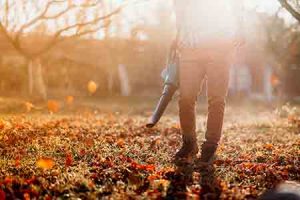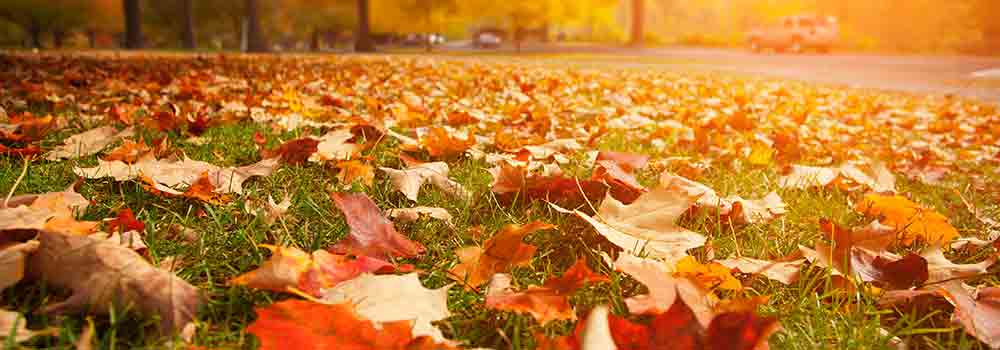
Our Clients:

Fall Lawn Care Tips: A Vital Time of Year

What Is Hydroseeding And What Are The Benefits?
August 6, 2019
The Benefits of Aerating Your Lawn
January 14, 2020Autumn Lawn Care in the Pacific Northwest
It’s fall here in Western Washington, and many homeowners may breathe a sigh of relief at the thought of diminishing yard responsibilities. Don’t relax just yet, though. Fall is the best time of year in the Pacific Northwest for lawn repair. The cool weather makes it so homeowners don’t have to water the lawn as often. Additionally, shorter days and cooler nights allow for easier seed germination, making fall the perfect time to repair any lawn, whether it’s hydroseed or sod. Check out these fall lawn care tips so that the yard looks great when spring and summer roll around!
Fall Lawn Care Tips
 Rake the Lawn
Rake the Lawn
Raking doesn’t just make the yard look nice and well-kept. Keeping dead leaves off of the lawn is vital to the lawn’s continued health. Thick layers of leaves block light and trap moisture underneath them, which could spell significant trouble for the grass come springtime. Make sure to use the leaf blower or rake the leaves as often as possible to keep the lawn in good condition. Even when the nearby trees have lost their leaves, keep raking where the leaves gather at the edge of the lawn. The wind tends to pile leaves up in corners which can lead to patchy lawns in the spring.
Keep Mowing, But Only to the Correct Height
It may be tempting to let the grass grow during the fall, especially if the neighbors are taking a break as well. Resist that temptation, though. Make sure to regularly cut the grass so that it doesn’t get too long during the fall and winter. Grass can grow quickly in the fall, especially here in Washington. If the grass gets too long, it may mat. Try to keep the grass at about 2.5 to 3 inches tall. Don’t go too short, either, though. Cutting grass too short disturbs the root system: the longer the grass, the longer the roots. Too-short grass will result in too-short roots, leaving the lawn vulnerable to the winter cold and dryness.
Continue Watering (If Needed)
It’s true that the lawn will need less water during the fall due to the cooler weather and rainy season here in the Pacific Northwest. However, keep an eye on the lawn and ensure that it’s getting at least one inch of water every week. No one wants dead grass in the springtime due to underwatering in the fall. Watch out for problem patches (areas that often dry out or discolor) and make sure that they’re getting water, especially if the lawn is on a slope or isn’t quite even.
Evaluate the Lawn’s Needs
It’s smart to aerate the lawn at least once every couple of years, and fall is the perfect time to do it. Over time, soil compacts and gets covered with thatch. Thatch is a layer of organic matter between the grass and the soil, and it is a combination of living and dead plant matter including leaves, crowns, rhizomes, and roots. Basically, if the lawn’s thatch gets too thick, water and nutrients have a hard time getting to and from the soil. Aerating the lawn loosens the soil, breaks up the thatch and allows for fertilizer to reach the grass’s roots where it’ll do the most good.
Fertilize the Lawn
The lawn’s roots need water to survive the cold winter, but they also need nutrients to sustain themselves through the season. Fall is when the plants store resources to get ready for spring growth. Early September and again in mid-November are good times to fertilize.
Overseed the Turf
Late summer through early fall is a great time to overseed the lawn. Keeping a dense lawn helps prevent weeds and keeps the grass healthy and resilient. Spread grass seed on the lawn. The seeds need constant and full contact with the soil. In addition, they must be moist until they germinate and have grown enough before the weather gets too cold. Consider hiring a professional landscaping company to help with overseeding or rent a tool to help the process along, such as a slit seeder or a power seeder.
Winter is Coming to Washington
Winter weather here in the Pacific Northwest doesn’t inspire many homeowners to do yardwork or lawn care. Sometimes, the heat and coziness indoors far outweigh the potential benefits of winter yard work, but there are definitely a few things to keep in mind this winter when it comes to the lawn.
Don’t Walk on the Grass (If It’s Frozen)
Try to avoid walking on the lawn if it is frosted or dormant. Frozen grass can be damaged by foot traffic, and it’s easy to forget during the winter when ice, rain, and snow pile up.
Keep the Lawn Clear
Honestly, this is just good advice year-round. However, ensuring that the lawn is free from leaves and other debris during the winter does wonders for its health in the spring and summer months.
What If the Lawn Dies During Winter?
Well, we hope that doesn’t happen. However, some lawns may have suffered far too much damage from years of neglect or harsh conditions. In that case, consider investing in high-quality sod and hydroseed in the springtime. That’s where we come in.
Country Green Turf Farms has over thirty years of turfgrass production experience. In 1988, we had just 5 acres of sod inventory. Today, we have over 350 acres. We provide sod and hydroseeding to homeowners and landscapers in Western Washington. If you’re worried about your lawn surviving this fall, come by any of our locations to ask questions and pick up seed or fertilizer to get started on that autumn lawn maintenance!










